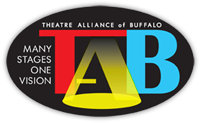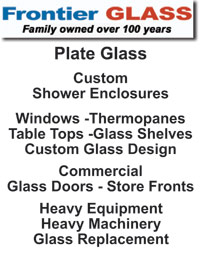 |
| Search |
|
|

|
 |
Education
At the recent Lancaster Central School District (LCSD) Board of Education (BOE) meeting Dan Web, Ph.D., and Lisa Johnson Director of the Lancaster –Depew Substance Abuse Prevention Coalition gave a presentation on the results of a substance abuse survey that was taken by 3,833 Lancaster /Depew students.
The Coalition is currently working on a set of formal community assessments and programs/interventions to address youth substance abuse. The Coalition is following a five-step process to understand and address problems in the community:
• Assessment
• Capacity
• Planning
• Implementation
• Evaluation
The coalition is currently supported by a federal grant received from the Genesee County Alcohol and Substance Abuse (GCASA) through a highly competitive application process. With continued progress and demonstration of outcomes the coalition will be eligible for larger grants (e.g., Drug Free Communities) to help the community.
The coalition is responsible for producing formal reports on youth substance use rates, and risk and protective factors in the community. As early as 2012, the coalition will be soliciting more community input in anticipation of applying for major federal grants to reduce substance abuse and thereby improving the Lancaster-Depew community.
According to Dr. Webb, the Lancaster-Depew Coalition’s mentoring agency – the Genesee/Orleans Council on Alcoholism and Substance Abuse – has been using these processes and programs for over 10 years. Their outcomes show that long-term change is possible.
This is the first year a complete survey was performed across eight schools in our community. There were two schools in Depew, three in Lancaster, and three private schools (OLBS, Our Lady of Pompeii and St. Mary’s). All grades from 6-12 were surveyed in 2011. There were 100 survey questions. It is a White House formulated program.
Dr. Webb presented a data sheet that illustrated the alcohol, tobacco, and other drug use over a past 30-day use period; for 3,833 Lancaster-Depew (L-D) students:
Past 30-day use:
Alcohol:
22% of L-D students reported use. The National average of reported use is 29.6%. L-D vs. National, -35%.
Binge Drinking:
10.9% of L-D students reported use. The National average of reported use is 16.86%. L-D vs. National, -54%.
Tobacco:
7.9% of L-D students reported use. The National average of reported use is 13.2%. L-D vs. National, -67%.
Marijuana:
10.3% of L-D students reported use. The National average of reported use is 14.3%. L-D vs. National, -39%.
Heroin: 0.7% of L-D students reported use. The National average of reported use is 0.4%. L-D vs. National, 43%.
Dr. Webb pointed out 25 students reporting heroin use make up the 0.7% usage rate number on the chart.
Survey credibility questioned
A Board of Education (BOE) member questioned the credibility of the student survey answers. “How do you know the students are honestly answering the questions on the survey? I have spoken to students who have taken this and past surveys and they tell me they answer “whatever”.
"The students tell me that they don’t take the survey seriously, make light of it and do not answer the questions honestly. And, other board members and I would like to see a breakout of only Lancaster student survey answers.”
Dr. Webb responded that the second part of the survey report that would not be covered this evening did contain breakout information.
As for the credibility of student answers, Dr. Webb replied that there are at least four ways that students are checked for honesty on the survey. The most reliable indicator came from the consistency of responses in the 100 question survey. Dr. Webb offered to come back and spend more time going over the data if the BOE decided they needed more information.
The board member countered that the numbers for tobacco and marijuana use was high in light of all the checks that were in place to guard its sale. Dr. Webb declared that the numbers indicated usage was low when comparing national averages.
This writer would also question survey credibility when:
• Students who took the survey also told me that many students did not take the survey seriously and answered untruthfully.
• Students in grades 6-9 answered that they drove vehicles after having drank alcohol.
• In several instances, student replies as being regular users outnumbered those that replied that they had ever tried the substance in question.
• Students in grades 6-12 report buying alcohol on their own.
Public comment session
The writer asked Dr’ Webb on the heroin usage percent. Out of the 3,833 students surveyed, how many were Lancaster students? Dr. Webb answered that he didn’t have that information at hand, but would it provide it later.
Dr. Webb stated that heroin use rate is only 0.7% for the 3,833 students surveyed; only 25 students reported use.
That percentage number could increase dramatically if you consider only a certain demographic. As is, 25 students using heroin is a seriously high number, in my opinion.
Data Analysis
The analysis here will be to compare Lancaster-Depew data (3,833 students surveyed from grades 6-12) vs. 11th and 12th grade data from both Lancaster-Depew and Lancaster Central School District; 1986 students surveyed of the 3,833.
Alcohol usage
The overall data (3,833 students surveyed) shows past 30-day usage of alcohol at 22%.
What this statistic does not indicate is usage in grades 11 and 12. The percentage for 11th graders is 39.4% and for 12 graders it climbs to 47.8%. Those are serious numbers.
In LCSD the usage percentage numbers are 41% for 11th graders and 51% for 12 graders.
Bing Drinking
The same can be said for binge drinking – five or more drinks at a sitting. The average rate for all 3,833 students surveyed is 10.9%.
The usage percentage rate for L-D students in the 11th grade is 23.1% and for 12th grade it is 25.4%.
For LCSD the usage percentage numbers are 24% and 28% respectively.
It should be noted that 32.4% of L-D students report getting alcohol from home with their parent’s permission.
Marijuana usage
For marijuana, the 30-day usage average for all L-D students is 10.3%.
For D-L 11th graders it is 21.1% and for 12th graders it is 22.6%.
For LCSD the percentage use rate is 21% and 26%.
Prescription and other Drug use
Not mentioned in Dr. Webb’s presentation was the use of other drugs that were broken out into individual categories, thereby making their usage small in number, but taken collectively should be of concern.
The categories include: Inhalants, Hallucinogens, Cocaine, Methamphetamines, Prescription Stimulants, Prescription Sedatives, Prescription Tranquilizers, Heroin, and Narcotic Prescription Drugs.
Collectively (grades 6 -12) they total 11.84%.
For L-D 11th graders usage is reported at 17.18% and for 12 graders it is 21.5%.
For LCSD the usage percentages are 22% and 32% respectively.
Risk and Protective Factor Survey Results
For this presentation, Dr. Webb skimmed over the risk and protective model factors that impact use. The factors are based on the simple premise that to prevent a problem from happening, the need to identify the factors that increase the risk of that problem developing is imperative and then to find ways to reduce that risk.
Risk Factors (Lower Score is Better)
FAM – Poor Family Management: 46.1% reporting risk in L-D. National average is 45.4. L-D risk is 2% higher.
FAM – Family Attitudes Favorable Toward ASB Program: 49.7% reporting risk in L-D. National average is 51.4. L-D rate lower by 3%.
PEER- Perceived Risk of Drug Use: 45% reporting risk in L-D. National Average is 43.2%. L-D rate is 4% higher.
PEER – Rewards for ASB: 51.7% reporting risk in L-D. National Average 47.2%. L-D rate is 9% higher.
Protective Factors (Higher Score is Better)
Protective Factors include social bonding to family, school, community and peers; healthy beliefs and clear standards for behavior; and individual characteristics.
COMM – Rewards for Prosocial Involvement: 47.3% reporting protection in L-D. The National Average is 45%. L-D higher by 5%.
Family – Rewards for Prosocial Involvement: 54.2% reporting protection in L-D. The National Average is 52.3%. L-D higher by 4%.
PEER – Rewards for Prosocial Involvement: 43.8% reporting protection in L-D. The National Average is 51%. L-D comes in lower at 16%.
© Copyright 2023 - Speakupwny.com
hosted by Online Media, Inc
Buffalo Web Design and Web Hosting
Top of Page
|
|
 |
Education
Latest Headlines
|




|
Buffalo Web hosting and Buffalo Web Design By OnLineMedia, Inc
www.olm1.com
Part of
www.onlinebuffalo.com
|


